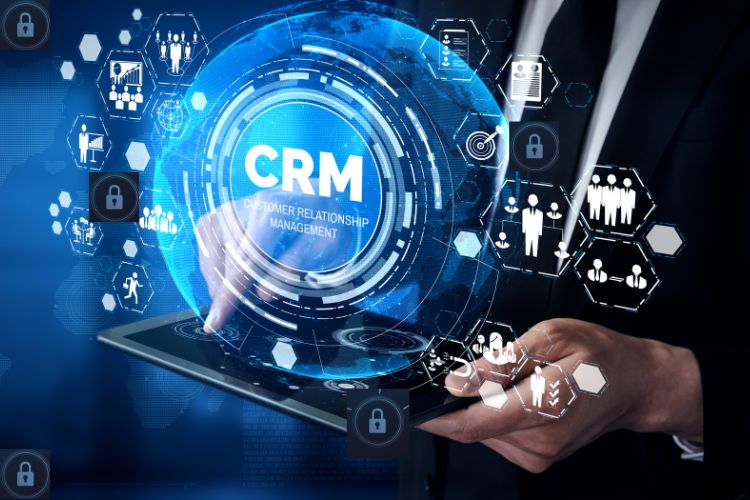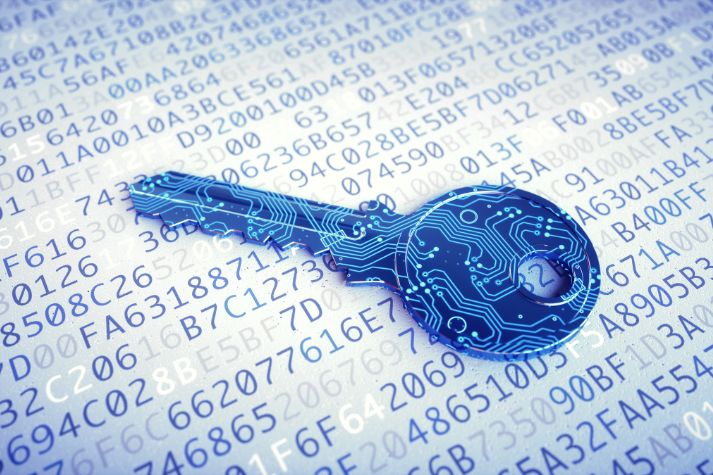
In the digital age, where data fuels the engines of Sales and Marketing, cybersecurity isn’t confined to the IT department alone; it’s the backbone of the entire business. In the dynamic landscape of sales and marketing, where data is the currency, cybersecurity emerges as the unsung hero, ensuring the integrity, confidentiality, and availability of crucial information.
Safeguarding the integrity of customer data, protecting digital assets, and ensuring the authenticity of marketing campaigns are just a few facets of how cybersecurity plays a pivotal role in the core functions that drive business success. In this interconnected landscape, Sales and Marketing stand as the pillars of a company’s growth, and cybersecurity stands as their unwavering guardian, ensuring trust, reliability, and resilience.
Securing Customer Data: In the contemporary business landscape, the importance of safeguarding sensitive customer information cannot be overstated. As the lifeblood of any Sales and Marketing operation, customer data forms the basis for targeted outreach, personalized campaigns, and building lasting relationships. Cybersecurity plays a pivotal role in mitigating risks associated with potential data breaches, ensuring the confidentiality, integrity, and availability of this invaluable asset. The ever-evolving threat landscape necessitates robust measures to protect customer data from malicious actors seeking unauthorized access.
Implementation of encryption protocols, access controls, and regular security audits are crucial components of a comprehensive cybersecurity strategy. Additionally, adherence to data privacy regulations, such as GDPR and CCPA, and other regional regulations is essential to instill confidence in customers and demonstrate a commitment to ethical and lawful data handling practices. By prioritizing the security of customer data, Sales and Marketing teams not only fortify their operational foundations but also cultivate trust among their clientele. This trust, once established, becomes a cornerstone for sustainable business growth and success.
Mitigating risks associated with data breaches and ensuring data privacy compliance are paramount concerns for Sales and Marketing teams in today’s digital landscape. Data breaches pose a significant threat, potentially leading to reputational damage, financial losses, and legal consequences. To address these risks, robust cybersecurity measures are essential. Sales and Marketing teams must implement encryption technologies, secure access controls, and conduct regular vulnerability assessments to fortify their data against unauthorized access.
Shielding marketing collateral, intellectual property, and proprietary information from cyber threats
Protecting digital assets is a crucial aspect of cybersecurity for Sales and Marketing teams, involving the safeguarding of marketing collateral, intellectual property, and proprietary information from cyber threats.
Marketing collateral, such as creative content, branding materials, and promotional content, represents a significant investment of time and resources. To ensure its integrity and prevent unauthorized use, cybersecurity measures should be in place. This includes access controls, encryption, and secure storage solutions.
Intellectual property, which encompasses unique ideas, designs, and creative content, is a valuable asset that requires protection from infringement and unauthorized use.
Implementing measures to prevent unauthorized access and data theft
Cybersecurity measures such as digital rights management (DRM) and secure storage platforms play a vital role in safeguarding intellectual property.
Proprietary information, which may include confidential business strategies, customer databases, and competitive insights, needs robust protection against cyber threats. Sales and Marketing teams should implement measures to prevent unauthorized access, employing encryption, firewalls, and regular security audits.
By actively implementing cybersecurity measures to protect digital assets, Sales and Marketing teams not only preserve the value of their creative efforts but also maintain a competitive edge in the market. This proactive approach ensures the confidentiality and integrity of digital assets, contributing to the overall success and security of the business.
Ensuring Campaign Integrity
In the dynamic landscape of digital marketing, the role of cybersecurity is pivotal in preserving the authenticity of marketing campaigns. This involves a multifaceted approach to protect against phishing attacks and prevent unauthorized alterations to marketing content, ensuring the credibility and trustworthiness of the brand’s messaging.
Phishing attacks pose a serious risk to the integrity of marketing campaigns. Cybercriminals often attempt to deceive recipients by sending fraudulent emails or messages, mimicking legitimate communication from the brand. Robust cybersecurity measures involve implementing advanced email security protocols, employee awareness training, and proactive monitoring to detect and mitigate phishing threats. By doing so, marketing teams can prevent unauthorized entities from impersonating the brand and misleading customers.
Preventing Unauthorized Alterations
The content of marketing campaigns, including advertisements, promotional materials, and brand assets, must remain untouched by unauthorized entities. Cybersecurity strategies include implementing stringent access controls, version tracking, and secure storage solutions to ensure that only authorized personnel can modify or update marketing content. Additionally, incorporating digital signatures and watermarking on critical assets adds an extra layer of verification, assuring the audience of the content’s authenticity.
Marketing campaigns often involve collaboration among team members, agencies, and external partners. Cybersecurity measures should encompass secure collaboration practices, such as encrypted communication channels and secure file-sharing platforms. Access controls must be in place to restrict access to sensitive campaign details, reducing the risk of unauthorized alterations. These measures foster a secure environment for collaborative efforts while maintaining the integrity of the campaign’s messaging.
Building Customer Trust
In the contemporary business landscape, the symbiotic relationship between cybersecurity and building trust with clients is undeniable. Creating a secure environment not only shields sensitive data but also becomes a cornerstone in instilling confidence in both customers and business partners, fostering a robust and enduring relationship.
Correlation between Cybersecurity and Trust: The foundation of trust is laid upon the assurance that a company prioritizes the security and confidentiality of customer information. Cybersecurity serves as the guardian of this assurance, acting as a proactive shield against potential threats. Clients are increasingly conscious of data breaches and cyber threats; hence, a robust cybersecurity framework becomes a testament to a company’s commitment to safeguarding their interests. The correlation between investing in cybersecurity measures and earning customer trust is evident in the digital age.
Leveraging a Secure Environment
A secure digital environment is not just a technical necessity but a strategic asset in the realm of customer trust. Businesses that prioritize cybersecurity create an atmosphere of reliability. Clients and business partners are more likely to engage with an organization that demonstrates a commitment to protecting their sensitive data. This secure foundation extends beyond the immediate transactional interactions, influencing the overall perception of the brand’s integrity and reliability.
Instilling Confidence in Stakeholders
Cybersecurity goes beyond protecting customer data; it extends to all stakeholders involved in the business ecosystem. From suppliers to partners, each entity contributes to the overall trust dynamic. A robust cybersecurity posture signals to stakeholders that their interests are safeguarded, fostering a collaborative and trustworthy environment. This confidence becomes a driving force in sustaining long-term relationships and promoting positive word-of-mouth referrals.

Incident Response and Recovery
In the dynamic landscape of cybersecurity, where threats loom unpredictably, establishing robust incident response and recovery strategies is imperative. This multifaceted approach involves proactive preparation for potential incidents, swift response mechanisms during the occurrence, and comprehensive recovery plans to minimize downtime and ensure seamless business continuity.
Proactive Incident Preparation: Cybersecurity incidents can take various forms, including data breaches, ransomware attacks, or system vulnerabilities. Proactive preparation involves anticipating potential threats through risk assessments, vulnerability scans, and continuous monitoring. By identifying potential weak points in the system, businesses can fortify their defenses, implementing preemptive measures to mitigate the impact of potential incidents.
Swift Response Mechanisms: Despite robust preventive measures, incidents may still occur. An effective incident response plan entails a well-defined set of actions to be taken immediately upon the detection of a cybersecurity threat. This includes isolating affected systems, analyzing the nature and scope of the incident, and implementing containment measures to prevent further damage. The agility of response mechanisms is crucial in limiting the impact of the incident and safeguarding critical assets.
Comprehensive Recovery Plans: The aftermath of a cybersecurity incident requires a structured recovery plan tailored to the unique challenges of sales and marketing data. This encompasses restoring affected systems, validating data integrity, and ensuring the resumption of normal sales and marketing operations. Recovery plans should extend beyond technical aspects, incorporating communication strategies to manage the narrative both externally and internally. Learning from incidents is crucial for refining and enhancing future incident response strategies within the sales and marketing domain.
Minimizing Downtime for Sales and Marketing Continuity: The ultimate goal of incident response and recovery is to minimize downtime and ensure the seamless continuity of sales and marketing operations. Timely and effective responses, coupled with meticulous recovery plans, contribute to reducing the impact on these critical business functions. This not only safeguards the integrity of sales and marketing data but also preserves the trust of clients and partners by demonstrating resilience in the face of cybersecurity challenges.
In the fast-paced realm of Sales and Marketing, where trust is the linchpin of success, cybersecurity emerges as the guardian of that trust. By integrating robust cybersecurity practices, businesses can not only protect their digital assets but also cultivate a resilient environment that fosters growth, innovation, and unwavering customer trust. Elevate your Sales and Marketing strategies through the shield of cybersecurity and embark on a journey of secure, sustainable success.
This website uses cookies to ensure you get the best experience on our website.